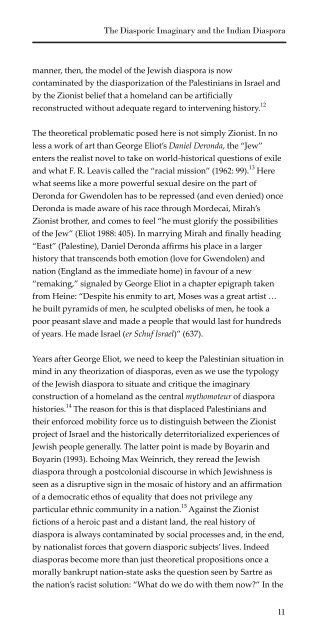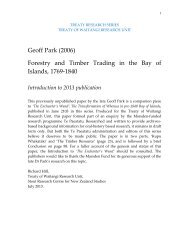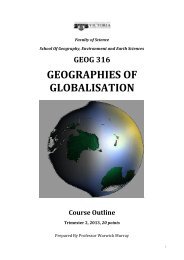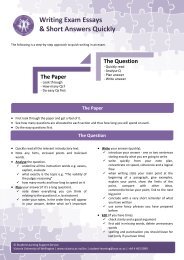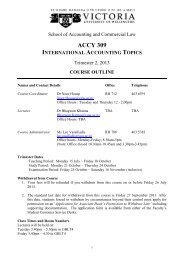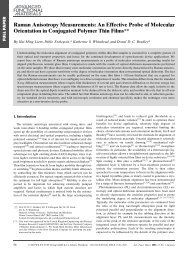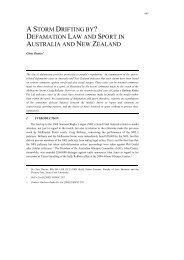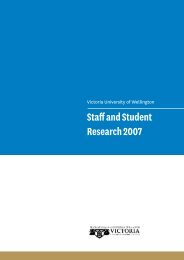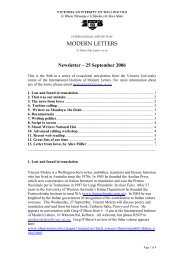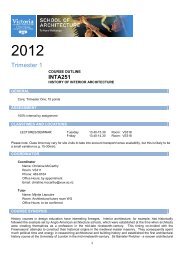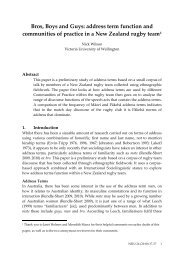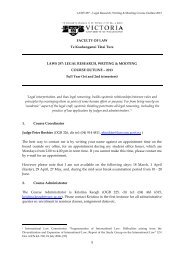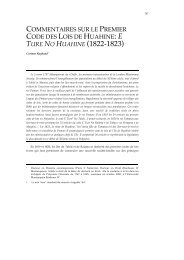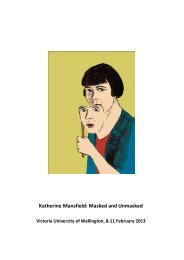The Diasporic Imaginary and the Indian Diaspora - Victoria ...
The Diasporic Imaginary and the Indian Diaspora - Victoria ...
The Diasporic Imaginary and the Indian Diaspora - Victoria ...
Create successful ePaper yourself
Turn your PDF publications into a flip-book with our unique Google optimized e-Paper software.
<strong>The</strong> <strong>Diasporic</strong> <strong>Imaginary</strong> <strong>and</strong> <strong>the</strong> <strong>Indian</strong> <strong>Diaspora</strong><br />
manner, <strong>the</strong>n, <strong>the</strong> model of <strong>the</strong> Jewish diaspora is now<br />
contaminated by <strong>the</strong> diasporization of <strong>the</strong> Palestinians in Israel <strong>and</strong><br />
by <strong>the</strong> Zionist belief that a homel<strong>and</strong> can be artificially<br />
reconstructed without adequate regard to intervening history. 12<br />
<strong>The</strong> <strong>the</strong>oretical problematic posed here is not simply Zionist. In no<br />
less a work of art than George Eliot’s Daniel Deronda, <strong>the</strong> “Jew”<br />
enters <strong>the</strong> realist novel to take on world-historical questions of exile<br />
<strong>and</strong> what F. R. Leavis called <strong>the</strong> “racial mission” (1962: 99). 13 Here<br />
what seems like a more powerful sexual desire on <strong>the</strong> part of<br />
Deronda for Gwendolen has to be repressed (<strong>and</strong> even denied) once<br />
Deronda is made aware of his race through Mordecai, Mirah’s<br />
Zionist bro<strong>the</strong>r, <strong>and</strong> comes to feel “he must glorify <strong>the</strong> possibilities<br />
of <strong>the</strong> Jew” (Eliot 1988: 405). In marrying Mirah <strong>and</strong> finally heading<br />
“East” (Palestine), Daniel Deronda affirms his place in a larger<br />
history that transcends both emotion (love for Gwendolen) <strong>and</strong><br />
nation (Engl<strong>and</strong> as <strong>the</strong> immediate home) in favour of a new<br />
“remaking,” signaled by George Eliot in a chapter epigraph taken<br />
from Heine: “Despite his enmity to art, Moses was a great artist …<br />
he built pyramids of men, he sculpted obelisks of men, he took a<br />
poor peasant slave <strong>and</strong> made a people that would last for hundreds<br />
of years. He made Israel (er Schuf Israel)” (637).<br />
Years after George Eliot, we need to keep <strong>the</strong> Palestinian situation in<br />
mind in any <strong>the</strong>orization of diasporas, even as we use <strong>the</strong> typology<br />
of <strong>the</strong> Jewish diaspora to situate <strong>and</strong> critique <strong>the</strong> imaginary<br />
construction of a homel<strong>and</strong> as <strong>the</strong> central mythomoteur of diaspora<br />
histories. 14 <strong>The</strong> reason for this is that displaced Palestinians <strong>and</strong><br />
<strong>the</strong>ir enforced mobility force us to distinguish between <strong>the</strong> Zionist<br />
project of Israel <strong>and</strong> <strong>the</strong> historically deterritorialized experiences of<br />
Jewish people generally. <strong>The</strong> latter point is made by Boyarin <strong>and</strong><br />
Boyarin (1993). Echoing Max Weinrich, <strong>the</strong>y reread <strong>the</strong> Jewish<br />
diaspora through a postcolonial discourse in which Jewishness is<br />
seen as a disruptive sign in <strong>the</strong> mosaic of history <strong>and</strong> an affirmation<br />
of a democratic ethos of equality that does not privilege any<br />
particular ethnic community in a nation. 15 Against <strong>the</strong> Zionist<br />
fictions of a heroic past <strong>and</strong> a distant l<strong>and</strong>, <strong>the</strong> real history of<br />
diaspora is always contaminated by social processes <strong>and</strong>, in <strong>the</strong> end,<br />
by nationalist forces that govern diasporic subjects’ lives. Indeed<br />
diasporas become more than just <strong>the</strong>oretical propositions once a<br />
morally bankrupt nation-state asks <strong>the</strong> question seen by Sartre as<br />
<strong>the</strong> nation’s racist solution: “What do we do with <strong>the</strong>m now?” In <strong>the</strong><br />
11


